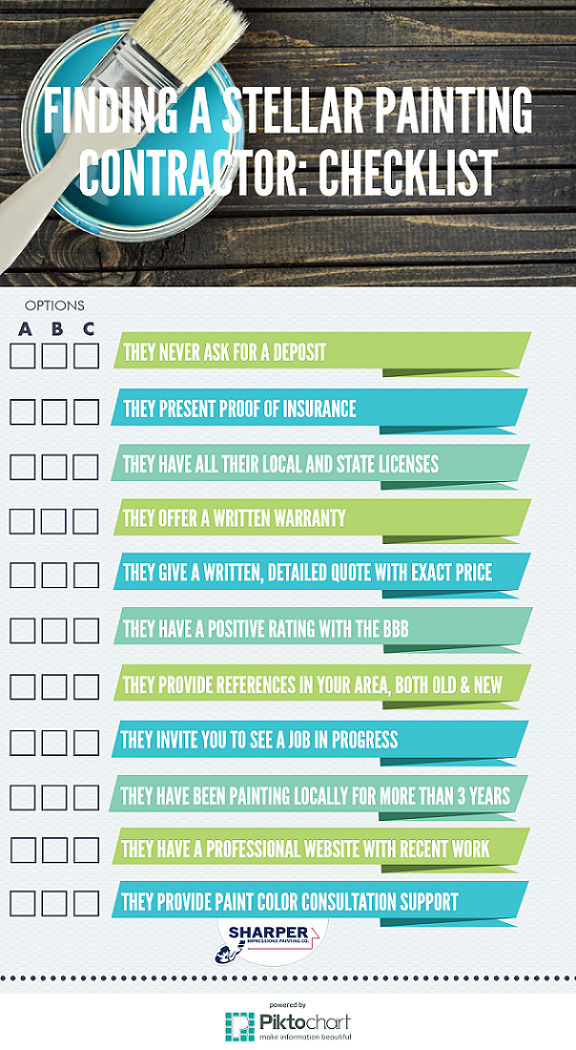Methodical Method To Preparing Your Walls Prior To Painting
Methodical Method To Preparing Your Walls Prior To Painting
Blog Article
Write-Up Writer-Lyhne Lindberg
When you're prepping your walls for paint, it's essential to follow a methodical procedure to guarantee a remarkable coating. Start by examining the wall surface for any type of damage; this action can make or break your task. Once you have actually determined any kind of issues, cleansing the surface area effectively is crucial, as a dirty wall surface can influence paint bond. After that, you'll need to spot any imperfections and apply a primer. But there specify methods and pointers that can raise your preparation video game-- allow's discover those further to attain the most effective outcomes.
Assessing Wall Surface Condition
Before you get your paintbrush, take a minute to examine your wall surfaces' problem. Look for any kind of visible damage like splits, holes, or peeling paint. These imperfections can impact how the paint sticks and looks when it's completely dry. If you discover any kind of substantial damages, you'll require to focus on fixings prior to diving into paint.
Look carefully at the appearance of your wall surfaces. Is the surface area smooth, or is there texture that might call for special consideration? Smooth walls generally call for much less prep, while distinctive surface areas might need more time to repaint uniformly.
Likewise, take into consideration the previous paint task. If the old paint is shiny, it mightn't permit brand-new paint to stick effectively. You'll wish to know if your wall surfaces have been repainted with oil-based or water-based paint, as this can affect your selection of primer or paint.
Ultimately, make note of any type of wetness problems. If you see indicators of water damages or mold and mildew, address these problems quickly to avoid more issues.
Cleaning up the Surface area
When you've analyzed the problem of your wall surfaces, the next step is cleansing the surface area. Beginning by collecting your products: a bucket, warm water, a mild detergent, a sponge or towel, and a scrub brush for harder spots.
Begin on top edge of the wall and work your way down. Mix the detergent with warm water in your bucket, after that dip the sponge or cloth into the service. Wring it out to prevent excessive dampness on the wall surfaces.
As you clean, pay close attention to locations that might've gathered dirt, oil, or finger prints. For stubborn spots, utilize the scrub brush carefully to prevent damaging the paint below. Rinse your sponge or fabric regularly in clean water to avoid spreading dirt around.
After cleaning, it's necessary to clean the wall surfaces with a wet cloth to eliminate any type of soap residue. This step ensures a smooth surface area for the new paint to abide by.
Enable the wall surfaces to dry completely before carrying on to the next preparation actions. This comprehensive cleansing procedure will help create a fresh canvas for your paint job, making sure the best results.
Patching and Priming
Patching and priming are crucial action in preparing your walls for a fresh coat of paint. First, examine your wall surfaces for any type of openings, fractures, or flaws. Make use of a premium spackling substance or patching paste to fill up these locations.
Apply the compound with a putty blade, smoothing it out so it's flush with the bordering surface area. Allow https://www.southernliving.com/home/colors/paint-colors-that-increase-home-value to completely dry entirely, and after that sand it gently until it's smooth and even.
As soon as you have actually patched every little thing, it's time to prime. https://interiorhousepaintersnear87642.dreamyblogs.com/33585832/why-top-quality-paint-matters-for-your-business helps secure the covered locations, making sure the paint sticks appropriately and offers a consistent finish. Choose a guide suitable for your wall surface type and the paint you'll be making use of.
Use the guide using a roller for bigger locations and a brush for corners and sides. If your patched locations are dramatically big or porous, you might intend to use a 2nd coat of primer after the initial one dries.
After priming, let everything completely dry thoroughly prior to proceeding to paint. This prep work won't only boost the appearance of your wall surfaces however also prolong the life of your paint task.
Take your time, and you'll be pleased with the outcomes.
Final thought
By complying with these straightforward steps, you can achieve a smooth and expert surface on your wall surfaces. Begin by examining their problem, after that tidy and patch any flaws before using guide. Keep in mind to permit ample drying out time and ensure every little thing is smooth prior to you study painting. With the right preparation, you'll establish the stage for a lovely makeover in your area. Now, collect your materials, breathe in the fresh air, and get ready to paint!
